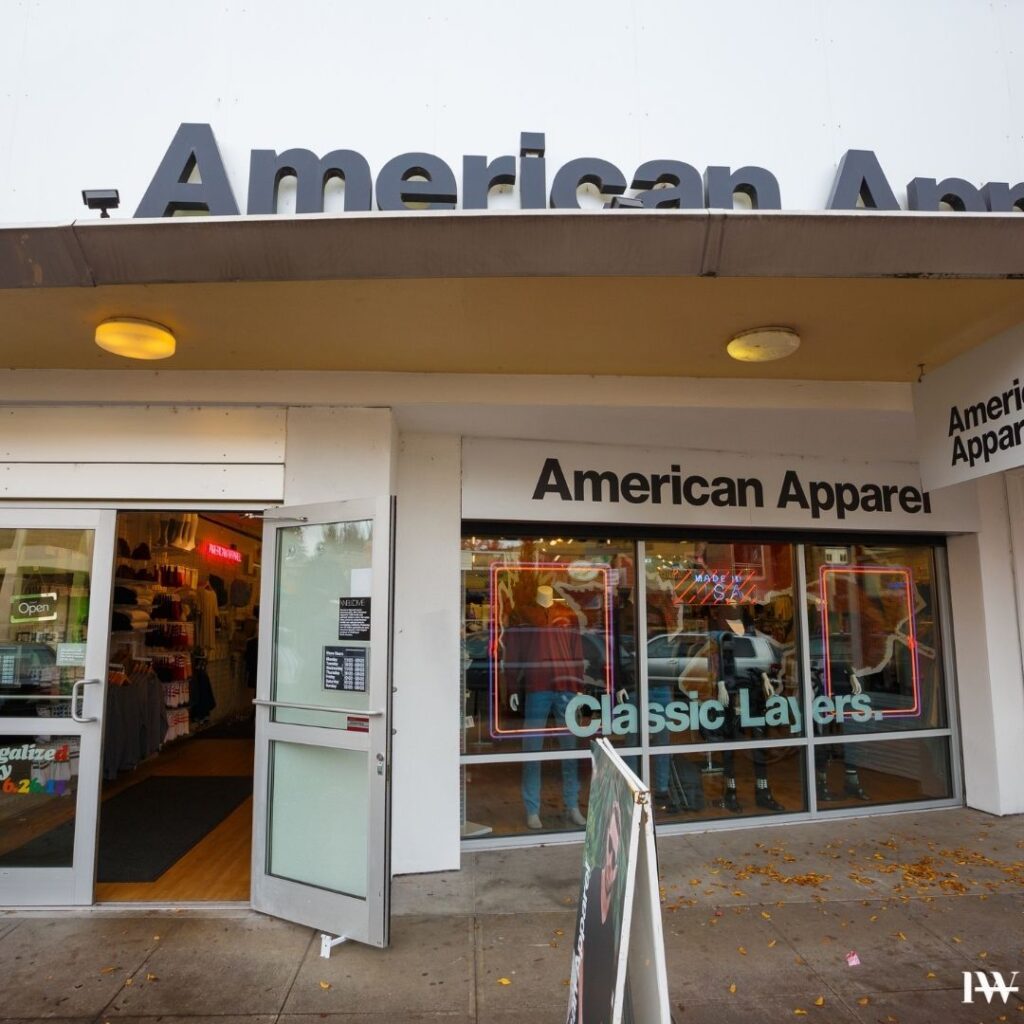American Apparel, under the initial leadership of founder Dov Charney, carved out a highly distinctive and often controversial marketing strategy that became synonymous with its brand identity. Far from traditional fashion advertising, their approach was a blend of provocative imagery, strong social stances, and a commitment to “Made in USA” and ethical manufacturing.
Here’s a breakdown of American Apparel’s marketing strategy:
1. Provocative and Un-retouched Advertising
This was arguably the most defining element of American Apparel’s marketing.
- “Real People” Aesthetic: Their ads famously featured non-professional models, often employees or people scouted on the street. The intention was to portray a sense of raw authenticity and relatable sexuality, departing from the highly polished and airbrushed images prevalent in mainstream fashion.
- Sexualized and Controversial Imagery: A significant portion of their advertisements were overtly sexual, featuring models in suggestive poses, often in minimal clothing or intimate settings. This led to frequent bans and widespread criticism for being “voyeuristic,” “offensive,” and even “irresponsible” by advertising authorities in various countries. Despite (or perhaps because of) the controversy, these ads generated immense buzz and media attention, providing “priceless publicity.”
- Embracing Imperfection: Unlike other brands striving for perfection, American Apparel’s ads often highlighted models’ blemishes, imperfections, and asymmetrical features, further reinforcing their “real people” ethos.
2. Vertically Integrated and “Sweatshop-Free” Messaging
A core pillar of American Apparel’s brand identity was its commitment to ethical manufacturing and being “Made in USA.”
- Domestic Production: The company heavily emphasized that its clothing was designed, manufactured, and distributed in downtown Los Angeles. This was a stark contrast to the prevalent practice of outsourcing production to countries with cheaper labor.
- Fair Wages and Employee Welfare: They actively promoted paying their factory workers significantly higher wages than minimum industry standards and offering benefits like 24-hour medical clinics and subsidized meals. This “sweatshop-free” narrative was a powerful differentiator and resonated with socially conscious consumers.
- Transparency (or perceived transparency): By controlling almost every stage of production, American Apparel aimed to project an image of transparency and ethical responsibility, though this was later challenged by labor violations and the company’s eventual bankruptcy.
3. Social and Political Activism
American Apparel was not afraid to take public stances on social and political issues, integrating them into their marketing.
- “Legalize LA” and “Legalize Gay” Campaigns: These campaigns used t-shirts, billboards, and ads to advocate for immigration reform and LGBTQ+ rights. This allowed the brand to connect with a progressive, urban, and socially aware target audience.
- Beyond Just Clothing: By championing these causes, American Apparel positioned itself as more than just a clothing company; it aimed to represent a lifestyle and a set of values.
4. Direct-to-Consumer Model and Digital Presence
American Apparel utilized a direct-to-consumer approach, heavily relying on its online presence.
- E-commerce Platform: Their robust e-commerce website was central to their sales strategy, allowing them to bypass traditional retail channels and maintain control over their brand image and customer experience.
- Early Digital Adoption: They were early adopters of digital marketing tactics, including using social media to justify their brand identity and engaging with the fashion community online. They even ventured into virtual worlds like Second Life with a virtual store.
- Data Analytics: The company leveraged data analytics to understand customer preferences and optimize product offerings, responding quickly to trends.
5. Product Focus: Basics and Simplicity
While their marketing was bold, their products were often simple, well-fitting basics.
- “Effortless Basics”: They specialized in everyday essentials like t-shirts, hoodies, and leggings, focusing on quality materials (often good quality cotton) and a comfortable fit.
- Minimalist Aesthetic: This simplicity in product design aligned with the minimalist aesthetic often seen in their advertisements, allowing the “realness” of the models and the message to take center stage.
The Downfall and Legacy
Despite its innovative and attention-grabbing marketing, American Apparel ultimately faced significant financial struggles and went bankrupt in 2016. This was due to a combination of factors, including mounting debts, changing consumer tastes, and numerous controversies surrounding founder Dov Charney, including allegations of sexual harassment and labor violations that contradicted the brand’s ethical claims.
After its acquisition by Gildan Activewear in 2017, the marketing strategy shifted to be less overtly sexualized and more focused on inclusivity and broader appeal, while still maintaining a commitment to ethical production.
In essence, American Apparel’s original marketing strategy was a double-edged sword. Its provocative nature and social stances generated immense publicity and built a strong, loyal customer base among a specific demographic. However, the controversies, particularly those linked to Charney’s personal conduct, ultimately overshadowed the positive aspects of their ethical manufacturing message and contributed to the brand’s eventual collapse. It remains a fascinating case study in how a brand can leverage shock value and social consciousness to achieve rapid growth, but also how such a strategy carries inherent risks.


